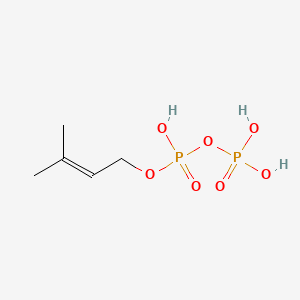| Brilli F et al. |
Detection of plant volatiles after leaf wounding and darkening by proton transfer reaction "time-of-flight" mass spectrometry (PTR-TOF). |
2011 |
PLoS ONE |
pmid:21637822
|
| Luo H et al. |
Analysis of the transcriptome of Panax notoginseng root uncovers putative triterpene saponin-biosynthetic genes and genetic markers. |
2011 |
BMC Genomics |
pmid:22369100
|
| Heaps NA and Poulter CD |
Synthesis and evaluation of chlorinated substrate analogues for farnesyl diphosphate synthase. |
2011 |
J. Org. Chem. |
pmid:21344952
|
| Atsbaha Zebelo S et al. |
Chrysolina herbacea modulates terpenoid biosynthesis of Mentha aquatica L. |
2011 |
PLoS ONE |
pmid:21408066
|
| Tsang A et al. |
Francisella tularensis 2-C-methyl-D-erythritol 4-phosphate cytidylyltransferase: kinetic characterization and phosphoregulation. |
2011 |
PLoS ONE |
pmid:21694781
|
| Sivy TL et al. |
Evidence of isoprenoid precursor toxicity in Bacillus subtilis. |
2011 |
Biosci. Biotechnol. Biochem. |
pmid:22146731
|
| Misawa N |
Carotenoid β-ring hydroxylase and ketolase from marine bacteria-promiscuous enzymes for synthesizing functional xanthophylls. |
2011 |
Mar Drugs |
pmid:21673887
|
| Sun Y et al. |
Pyrosequencing of the Camptotheca acuminata transcriptome reveals putative genes involved in camptothecin biosynthesis and transport. |
2011 |
BMC Genomics |
pmid:22035094
|
| Muraguchi T et al. |
Polished rice as natural sources of cancer-preventing geranylgeranoic acid. |
2011 |
J Clin Biochem Nutr |
pmid:21765600
|
| Hao da C et al. |
The first insight into the tissue specific taxus transcriptome via Illumina second generation sequencing. |
2011 |
PLoS ONE |
pmid:21731678
|
| Tang Q et al. |
An efficient approach to finding Siraitia grosvenorii triterpene biosynthetic genes by RNA-seq and digital gene expression analysis. |
2011 |
BMC Genomics |
pmid:21729270
|
| Davey MS et al. |
Human neutrophil clearance of bacterial pathogens triggers anti-microbial γδ T cell responses in early infection. |
2011 |
PLoS Pathog. |
pmid:21589907
|
| Okada K |
The biosynthesis of isoprenoids and the mechanisms regulating it in plants. |
2011 |
Biosci. Biotechnol. Biochem. |
pmid:21737944
|
| Baumeister S et al. |
Fosmidomycin uptake into Plasmodium and Babesia-infected erythrocytes is facilitated by parasite-induced new permeability pathways. |
2011 |
PLoS ONE |
pmid:21573242
|
| Gray DW et al. |
Biochemical characterization and homology modeling of methylbutenol synthase and implications for understanding hemiterpene synthase evolution in plants. |
2011 |
J. Biol. Chem. |
pmid:21504898
|
| Schmidt A et al. |
Induction of isoprenyl diphosphate synthases, plant hormones and defense signalling genes correlates with traumatic resin duct formation in Norway spruce (Picea abies). |
2011 |
Plant Mol. Biol. |
pmid:22002747
|
| Meier S et al. |
A transcriptional analysis of carotenoid, chlorophyll and plastidial isoprenoid biosynthesis genes during development and osmotic stress responses in Arabidopsis thaliana. |
2011 |
BMC Syst Biol |
pmid:21595952
|
| Jang HJ et al. |
Retinoid production using metabolically engineered Escherichia coli with a two-phase culture system. |
2011 |
Microb. Cell Fact. |
pmid:21801353
|
| Lemuth K et al. |
Engineering of a plasmid-free Escherichia coli strain for improved in vivo biosynthesis of astaxanthin. |
2011 |
Microb. Cell Fact. |
pmid:21521516
|
| Zhou K et al. |
Novel reference genes for quantifying transcriptional responses of Escherichia coli to protein overexpression by quantitative PCR. |
2011 |
BMC Mol. Biol. |
pmid:21513543
|
